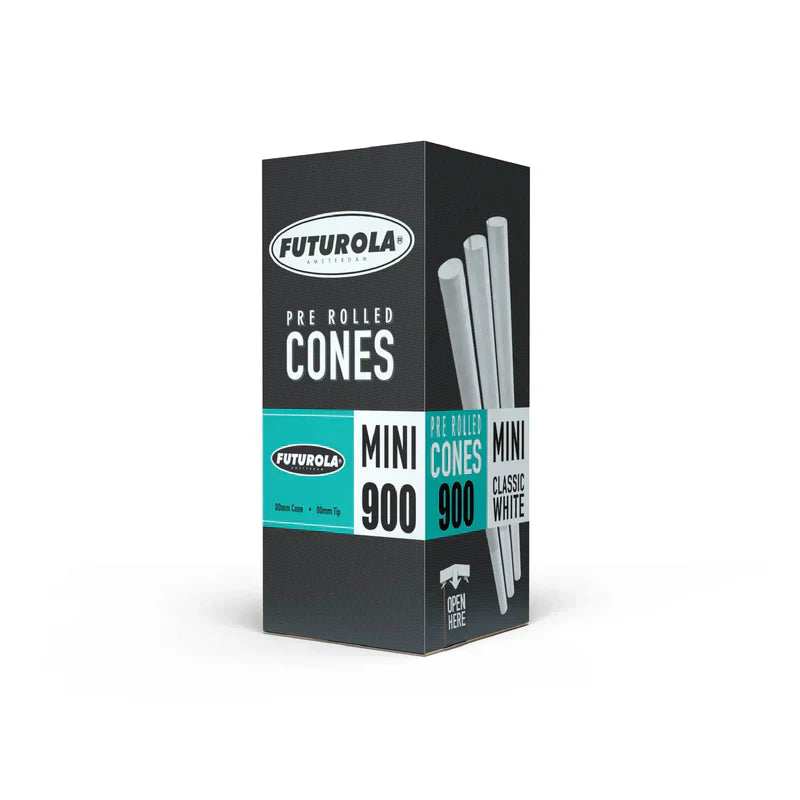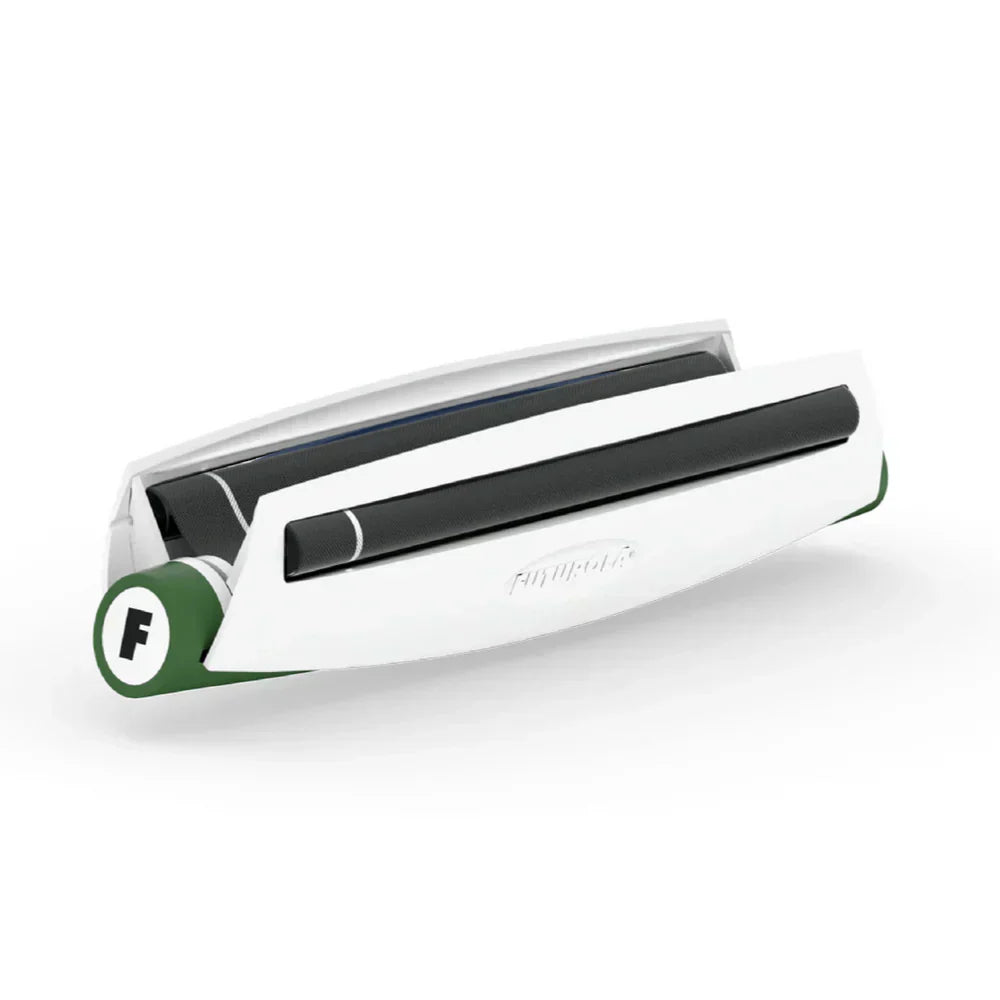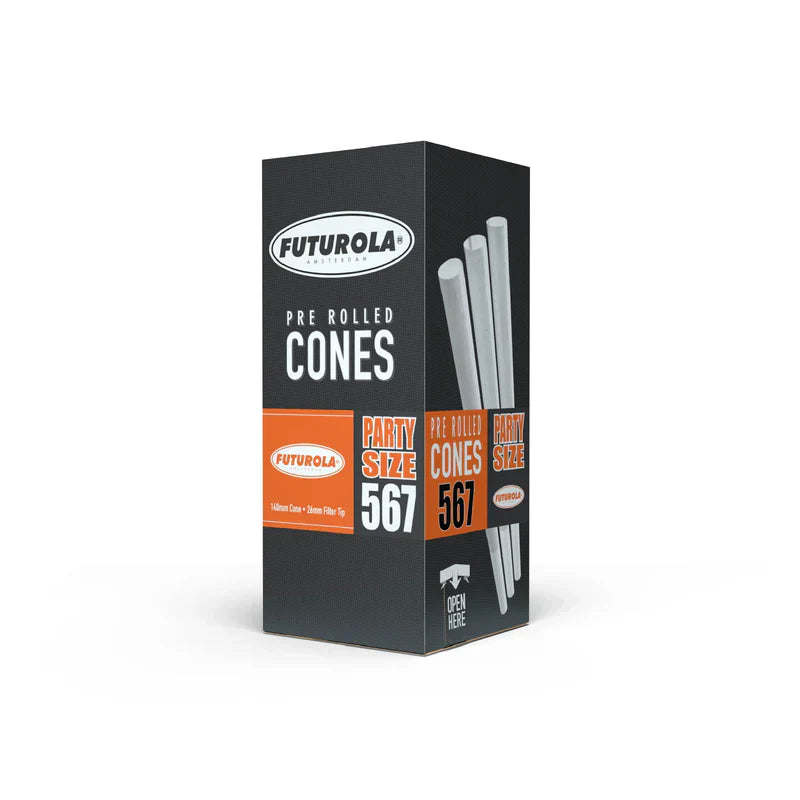Slender paper cones have become a preferred choice among those who value precision, neatness, and efficiency in pre-roll preparation. Designed with a narrower profile compared to standard options, they offer a refined packing experience and a sleek final result. The elongated, slim structure ensures a measured capacity that caters to both smaller portions and more controlled material usage, while still maintaining a professional appearance.
The size and structure of slender paper cones make them suitable for a variety of purposes, from personal preparation to high-volume production. Their slim diameter allows for a more gradual and even packing process, which can contribute to consistency across batches. In a production setting, these cones are often paired with compatible filling devices to maintain uniformity and speed.
The design is not only about aesthetics but also about function. The reduced circumference creates a naturally tighter pack with less material, making them ideal for those who prioritize moderation or specific dosing. Over time, this has made slender paper cones a favored option for operations looking to diversify their product lines without compromising quality.
Benefits of Using Slender Paper Cones
Slender paper cones offer multiple advantages for both individual users and businesses engaged in pre-roll production. Their size, construction quality, and compatibility with modern filling tools contribute to efficiency, consistency, and versatility. These factors make them a practical choice for anyone looking to optimize preparation workflows while maintaining a polished end product.
The benefits extend beyond appearance. Slender paper cones promote cost efficiency by using less material per unit, reduce packing errors thanks to their guided shape, and allow for cleaner, more organized production processes. Whether hand-packing or using automation, their design works to streamline operations without sacrificing quality.
Controlled Material Usage
Slender paper cones provide a simple yet effective solution for portion control. The reduced diameter and capacity mean each unit requires less material, helping maintain consistency across multiple cones. This is particularly important for standardized pre rolled cone production where each product must match a specific specification.
In large-scale production environments, even a slight reduction in material usage per cone can result in significant cost savings over time. On a smaller scale, this feature appeals to those who prefer moderation or precise dosing without altering the quality of the experience.
Consistency in Packing
The tapered, slim structure of slender paper cones naturally guides material into place, reducing the likelihood of uneven fills or loose spots. This makes them easier to work with in both manual and automated packing systems. Consistency in packing translates directly to consistency in performance, ensuring that each cone meets the same quality standard.
Even density from top to bottom not only improves appearance but also supports proper airflow. This predictability builds trust with customers and simplifies quality control procedures in production.
Versatility in Applications
Slender paper cones are adaptable to various workflows and use cases. They can be packed individually for personal use or integrated into a high-volume production line without adjustments to core processes. Their compatibility with a range of tools and accessories makes them a practical choice for operators working with multiple product sizes and formats.
For businesses, the ability to add a slender option to a product lineup broadens the customer base and caters to different preferences, all while maintaining operational efficiency.
Choosing the Right Slender Paper Cones
Selecting the best slender paper cones requires consideration of multiple factors that affect both performance and production workflow. Quality materials, consistent dimensions, and compatibility with existing equipment all play a role in ensuring reliable results. Making the right choice at the outset helps avoid operational issues and supports the long-term consistency of the product line.
It’s important to remember that slender paper cones are not universally identical. Small differences in paper thickness, filter construction, and overall dimensions can influence how they perform in packing, storage, and use. Paying attention to these details ensures smoother operations and better quality control.
Paper Type and Weight
Paper type directly affects the cone’s performance and presentation. Lighter-weight papers tend to have a softer appearance and may allow for improved airflow, while thicker papers add durability and are less prone to damage during handling. The choice between bleached and unbleached paper is often a matter of preference or brand identity, though both should maintain consistent quality across batches.
Consistency in paper thickness is crucial. Variations can lead to uneven burning or difficulty in packing, particularly in automated systems. Selecting a paper type and weight that aligns with both functional and aesthetic goals helps ensure reliable performance.
Filter Tip Quality
The filter tip, or crutch, plays a structural role in slender paper cones. A firm, well-constructed filter maintains the cone’s shape during packing and use, while also supporting proper airflow. Consistency in filter height and firmness is essential for both manual and automated packing processes.
High-quality filter tips help prevent material from slipping through and provide a comfortable grip for the user. In production settings, consistent filter specifications also improve packing efficiency by reducing machine misfeeds or manual adjustments.
Compatibility with Filling Tools
For operations using automated filling machines, like a knockbox, matching slender paper cones with compatible trays and holders is critical. Even slight variations in length, diameter, or taper can cause cones to misalign in the equipment, leading to uneven fills or wasted material.
Before committing to bulk purchases, it’s recommended to verify that the cones fit securely in existing equipment. This prevents costly delays and ensures smooth integration into production workflows.
Step-by-Step Guide to Packing Slender Paper Cones
Properly packing slender paper cones is a process that benefits from consistency, attention to detail, and the right tools. Whether working with a small batch or preparing for large-scale production, following a structured process helps achieve uniform results.
The process begins with material preparation, which directly impacts how the cone fills and performs. From there, correct loading and finalizing techniques ensure each cone meets the desired specifications. Skipping or rushing these steps can lead to inconsistencies that affect the end product.
Preparing the Material
Material preparation starts with achieving the right grind consistency. A medium, fluffy grind works best for slender paper cones, as it allows for even packing without restricting airflow. Overly fine particles can lead to tight compaction and airflow issues, while large pieces may create gaps.
Inspecting the grind for stems or debris is essential, as these can puncture the paper or cause uneven distribution. Moisture control is equally important: material that is too dry may create excessive dust, while overly moist material can clump and resist settling evenly.
Loading the Cone
Once the material is ready, the slender paper cone should be placed securely in a stable holder or tray. Ensuring the cone is upright and properly aligned prevents spillage and promotes uniform filling. For manual packing, material should be added in small increments, with gentle tamping between additions.
In automated systems, spreading the material evenly across the filling tray ensures that vibration or distribution mechanisms work efficiently. Periodic checks for cone alignment can prevent inconsistencies and reduce waste.
Finalizing the Pack
After the cone is filled to the desired level, a gentle tap or tamp can settle any loose material at the top. Over-compression should be avoided, as it can restrict airflow and impact performance. For a finished look, the tip may be twisted or folded, depending on preference or packaging requirements.
A final quality check ensures that all cones are filled evenly and consistently. This step is critical in both small and large-scale production to maintain professional standards.
Best Practices for Working with Slender Paper Cones
Working efficiently with slender paper cones involves more than just proper filling. Maintaining clean work environments, standardizing processes, and protecting the cones during storage are all essential to achieving consistent results. These practices not only improve quality but also streamline workflow and reduce operational issues.
By implementing structured procedures, both individual users and production teams can improve efficiency, reduce waste, and maintain the integrity of the cones from start to finish.
Maintain Clean Work Areas
Dust, residual material, and debris can interfere with the packing process and affect cone quality. Regular cleaning of work surfaces, tools, and machine components ensures smooth operation and consistent output. In automated systems, clearing vibration trays and cone holders between runs prevents buildup that can cause misalignment.
A clean work area also supports compliance with hygiene and quality control standards, which is especially important in commercial production.
Standardize Measurements
Maintaining a standard material weight per cone helps ensure consistency across batches. Periodically weighing filled cones can identify discrepancies early, before products reach packaging. For slender paper cones, even small deviations in weight can significantly affect density and performance.
Using a standard weight chart and incorporating measurement checks into the workflow improves reliability and supports brand reputation.
Store Cones Properly
Proper storage protects slender paper cones from damage before and after filling. Excessive humidity, temperature fluctuations, or pressure can warp the paper or loosen the filter tip. Storing cones in protective tubes, trays, or climate-controlled spaces maintains their shape and integrity.
Well-stored cones are easier to fill and maintain a more professional appearance, which is important for both personal satisfaction and customer perception.
FAQs
What makes slender paper cones different from standard cones?
Slender paper cones feature a narrower diameter, resulting in smaller capacity and more controlled fills. This design supports consistency, portion control, and a refined appearance.
Can slender paper cones be used in automatic filling machines?
Yes, as long as the cones are compatible with the machine’s tray and size requirements. Confirming measurements before purchase ensures proper function.
How much material can a slender paper cone hold?
Capacity varies based on the cone’s specific dimensions, but it is generally less than standard formats. This smaller capacity is useful for precise dosing and cost efficiency.
Are slender paper cones suitable for both personal and commercial use?
They are well-suited for both. The design supports personal preparation needs while also integrating smoothly into commercial production workflows.
How should slender paper cones be stored to maintain quality?
Store them in a cool, dry location, away from humidity and direct pressure. Protective containers or trays can help preserve their structure.





LEAVE A COMMENT
All comments are moderated before being published.
This site is protected by hCaptcha and the hCaptcha Privacy Policy and Terms of Service apply.